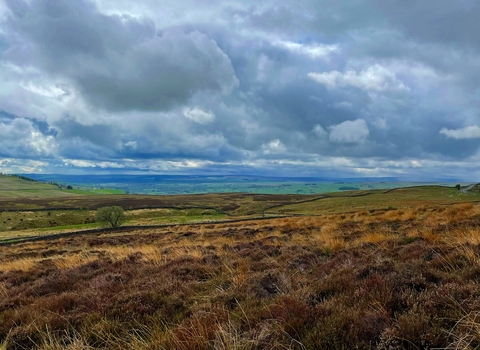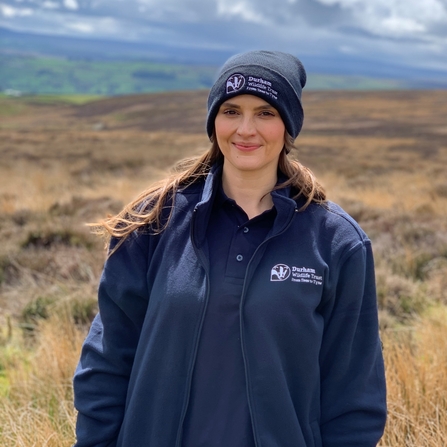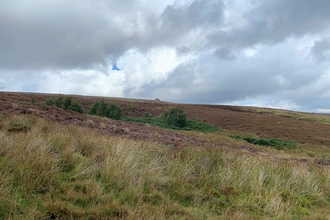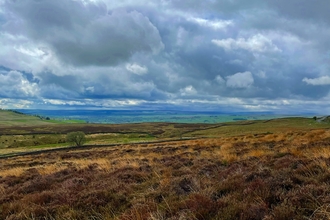
Cuthbert’s Moor Managing Moors
A one-year project focused on the restoration of Cuthbert’s Moor, a 121-hectare upland moorland site in Teesdale.
The Cuthbert’s Moor Managing Moors project, is a one-year project focused on the restoration of Cuthbert’s Moor. Acquired last year, this 121-hectare upland moorland site was previously managed as a grouse moor. Project Officer, Rebecca Clark, will oversee the citizen science programme and also commission surveys and habitat restoration.
Cuthbert’s Moor lies within the North Pennines Area of Outstanding Natural Beauty and is part of the Teesdale Allotments Site of Special Scientific Interest (SSSI). Teesdale Allotments SSSI is of national importance for its breeding bird assemblage. Across the SSSI, the bird community includes lapwing, snipe, redshank, curlew, golden plover, and black grouse, all species which are declining nationally, due to changes in land use, particularly agricultural intensification. In terms of breeding wader densities, the populations in the Teesdale District of Durham are the most significant in the uplands of England.
The nature reserve is covered by a relatively diverse range of upland vegetation types, which include wet acid grassland and mire and heather communities. The Cuthbert’s Moor Managing Moors project aims to determine which species are utilising these habitats and investigate why some species that might be expected to be found are not present. Baseline habitat and vegetation surveys are being undertaken this year, together with invertebrate and bird surveys. The surveys will make use of standard survey techniques and also new technologies. This includes work with Durham University on acoustic monitoring of birds, which, if successful, will allow repeat bird surveys to be carried out with much less surveyor effort and, therefore, lower cost.
The survey data gathered, and the work of citizen scientist volunteers, will inform the ongoing management of the site and lead to other research opportunities. By generating detailed survey information and closely monitoring how the site changes, Cuthbert’s Moor will inform conversations around upland habitat management and restoration, and the benefits that good stewardship of sites like this brings. The Managing Moors Project has been made possible by funding from the ScottishPower Foundation and The Linder Foundation.

Rebecca Clark - Cuthbert's Moor Managing Moors Officer
"My name is Rebecca Clark, the new Cuthbert’s Managing Moors Officer, overseeing this one-year project. I will be recruiting volunteers for citizen science monitoring and habitat restoration work, and overseeing professional surveys that will provide an ecological baseline for the site to inform future management."


Durham Wildlife Trust was able to purchase the land previously known as Horden Allotment thanks to a generous donation from an anonymous donor through the Charities Aid Foundation (CAF). Having heard the land was for sale, and used for commercial grouse shooting, the donor wanted to ensure it would be preserved for wildlife and environmental conservation instead. CAF reached out to Durham Wildlife Trust to offer to fund the land purchase on behalf of the donor and facilitated an £850,000 donation. The land was renamed Cuthbert’s Moor, a name chosen by the donor as a nod to St Cuthbert who is associated with Durham and hailed as an early conservationist. Legend has it that those who harassed or ate his beloved eider ducks were struck down by Cuthbert’s curse!


